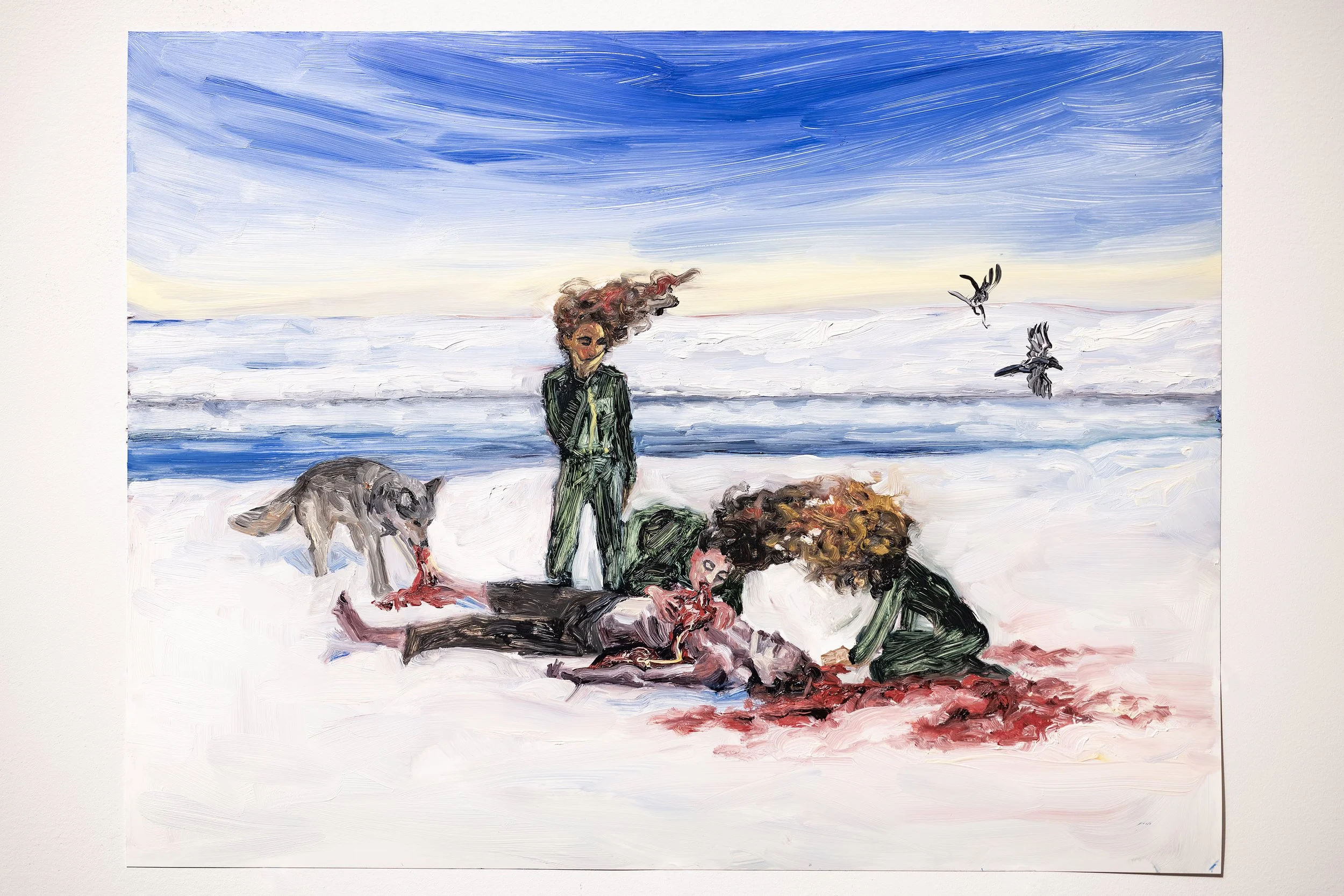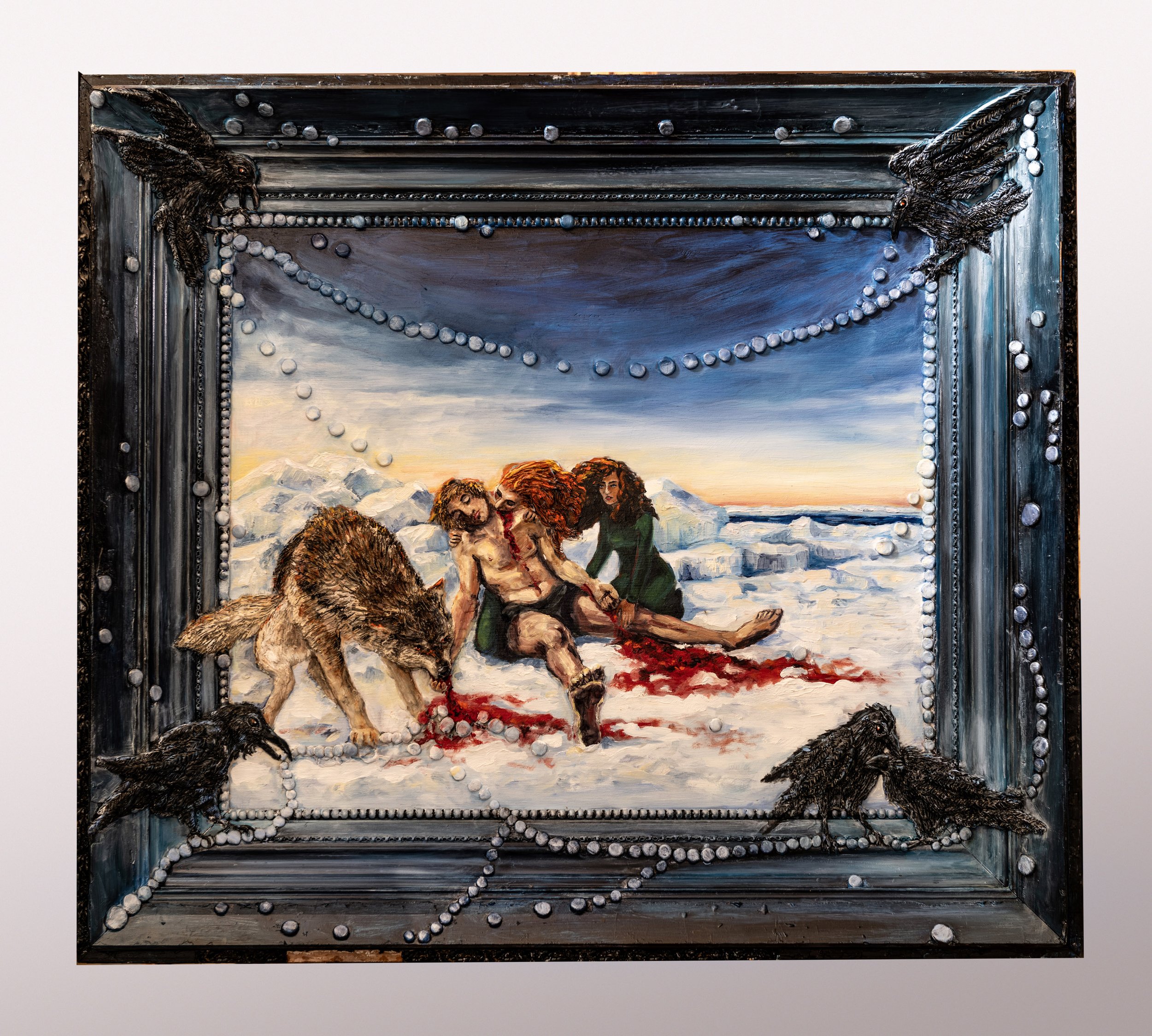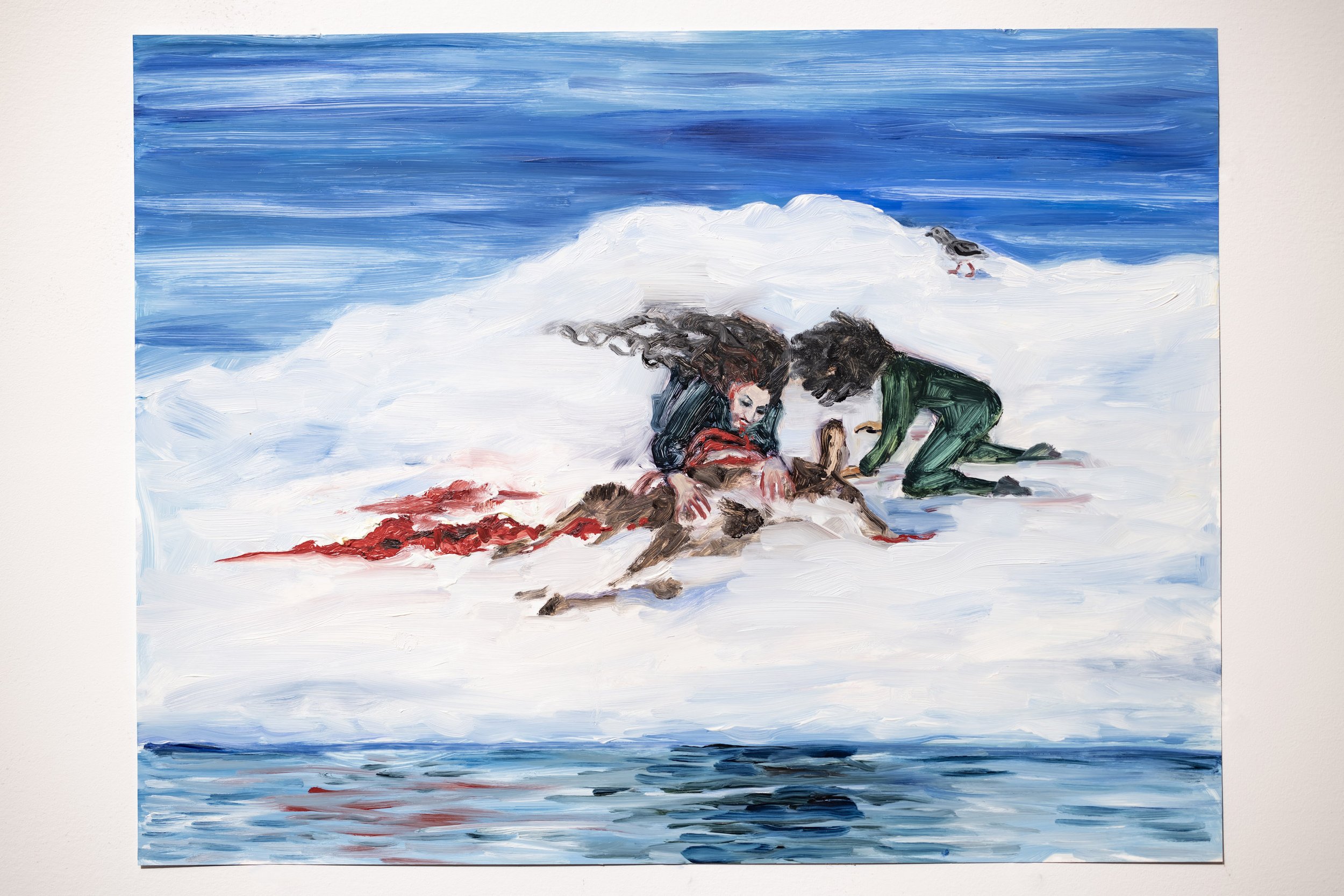JESSICA HARGREAVES



Girls At the End of the World,” Jessica Hargreaves' most recent series, features aspirational visions of heroines that merge news stories about disaster and environmental destruction with surrealistic scenes of female empowerment and twisted humor. The girls’ shero-styled antics take on a hyperbolic quality as they face zoomorphic monsters while incorporating art historical references to iconic works by artists such as Turner, Delacroix, Bruegel and Tiepolo. The resulting images knowingly incorporate cliches of feminist separatists and sexy superheroines into scenes that are dark and absurd, yet ultimately hopeful.
This narrative spans across sculptural paintings, prints in the form of wallpaper, cushions, and curtains, and finally into jewelry, or wearable art. The first print tells a story of girls who must fight to survive amidst the climate crisis. The second print depicts them bringing a hummingbird inside a diver's helmet to live with them in the ocean. The hummingbird grows a fishtail, the seahorses sprout wings, and the girls hair becomes coral. Jessica created a post-apocalyptic utopia where beings of the land, sea, and sky evolve to coexist, inspired by the idea that we must reimagine another way of being in order to survive the destruction humanity has wrought.
Visit the artist’s website and Instagram.